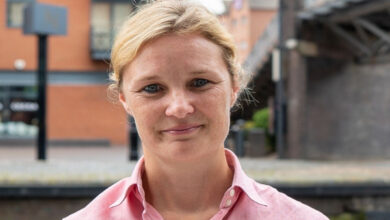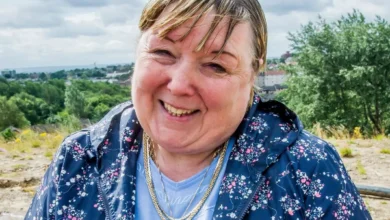Annabel Rook: The Visionary Theatre Maker Transforming Lives Through Art and Compassion
How Annabel Rook Empowered Refugee and Marginalised Communities with the Power of Creativity

Annabel Rook was a British theatre maker, arts facilitator, and humanitarian who dedicated more than two decades of her life to working with marginalised and displaced communities. As the founder and director of MamaSuze CIC, she created inclusive, joyful spaces where women and children—especially those affected by forced displacement and gender-based violence—could rebuild their confidence, identity, and sense of belonging through art. Her work embodied the belief that creativity and play are fundamental human rights, leaving behind a legacy that continues to inspire and uplift countless lives.
Early Life and Background
Annabel Rook was born on March 30, 1979, in the United Kingdom. From a young age, she displayed a deep sense of empathy and a passion for storytelling through performance. Growing up, she was drawn to theatre not just as entertainment, but as a transformative tool for expression, healing, and connection. This early fascination shaped her lifelong dedication to using the arts for positive social change.
While little is publicly documented about her childhood or early education, her later career reflects a clear academic and experiential grounding in theatre, facilitation, and humanitarian work. Her philosophy was rooted in the idea that art transcends boundaries and has the power to heal those affected by trauma, displacement, and oppression.
Annabel Rook’s Career Journey
Theatre for Social Change
Annabel Rook spent over 20 years working with marginalised and displaced people, including refugees, asylum seekers, and survivors of trafficking. She believed that “the ability to play and create should be a fundamental human right”—a statement that became the guiding principle of her career.
Before founding MamaSuze, Annabel worked for Pan Intercultural Arts, a charity that uses drama and creative expression to empower disadvantaged communities. There, she helped young refugees and survivors of human trafficking discover their voices and reclaim their identities through collaborative theatre projects.
Her approach, known as “theatre for social change,” was more than performance—it was transformation. By using storytelling, improvisation, and creative workshops, she encouraged participants to share their experiences in safe, empowering spaces. The results were profound: improved confidence, self-expression, and community connection.
The Birth of MamaSuze CIC
Empowering Women and Children
Annabel Rook’s vision reached its fullest expression when she founded MamaSuze CIC, an arts-based charity dedicated to supporting women and children survivors of forced displacement and gender-based violence. Through MamaSuze, she provided a haven where participants could rediscover joy, creativity, and purpose.
At MamaSuze, Annabel and her team offered diverse workshops in theatre, crafts, movement, and visual arts. These sessions weren’t just about creating art—they were about rebuilding lives. Women who once felt silenced by trauma began expressing themselves through performance, while children found freedom and hope in playful creativity.
Her belief was simple yet revolutionary: everyone deserves the right to create. This inclusive philosophy transformed MamaSuze into a beacon of empowerment and compassion. Many participants credited the program with restoring their sense of self-worth and helping them imagine a brighter future.
Annabel Rook’s Philosophy
Annabel’s work was driven by her unwavering belief in art as a human right. She often said that creativity should not be reserved for the privileged—it should be accessible to everyone, especially those who have lost so much through displacement and violence.
Her approach combined emotional intelligence, community building, and creative facilitation. Annabel believed that through collaboration and shared expression, individuals could heal deep psychological wounds. Her methodology became a model for many arts practitioners and humanitarian organisations worldwide.
She also challenged traditional charity models by integrating co-creation and shared leadership into her projects. Participants were not just recipients of aid—they were collaborators, artists, and storytellers shaping their own narratives.
Annabel Rook Age
At the time of her passing in June 2025, Annabel Rook was 46 years old. Despite her relatively young age, she had achieved an extraordinary impact within the realms of humanitarianism, art, and social activism. Her decades of work continue to resonate in the communities she touched, and her life remains a powerful reminder of how creativity can be a force for justice and healing.
Annabel Rook Family
Annabel Rook was deeply connected to her family and close friends, who described her as compassionate, joyful, and selfless. Though details about her family remain private out of respect, it is known that she cherished her loved ones and maintained a strong bond with them throughout her life.
In tributes following her passing, family members and colleagues highlighted her boundless empathy and commitment to others. They spoke of her as someone who lived with purpose, always putting community and compassion at the heart of everything she did.
Her family has continued to honor her legacy through ongoing support for MamaSuze and other creative community projects that embody Annabel’s mission.
Annabel Rook’s Legacy
Annabel’s untimely death in June 2025 deeply shook the communities she served. She was tragically found fatally stabbed in her North London home, an incident that led to widespread grief and reflection on her incredible life and impact. Despite this devastating event, her work continues through MamaSuze CIC and the many lives she transformed.
The Guardian, Evening Standard, and other British media outlets described Annabel as “a profound force for good”—a phrase that captures her spirit perfectly. Her colleagues at MamaSuze remembered her as a visionary who dedicated every day to empowering others, using art not as decoration but as liberation.
In her memory, supporters established funds and memorial initiatives to ensure her work continues. These initiatives focus on expanding access to creative workshops and helping more displaced women and children rebuild their futures.
Annabel Rook Net Worth
Annabel Rook’s life was never driven by wealth or material success. Her net worth, while not publicly documented, was modest compared to her immeasurable humanitarian impact. Her true wealth lay in the lives she uplifted and the communities she built through empathy, creativity, and hope.
As the director of a community interest company (CIC), her focus was always on reinvesting resources into people and projects rather than personal gain. Her legacy continues to yield priceless social value through MamaSuze’s ongoing work.
Annabel Rook on Wikipedia
As of now, Annabel Rook does not have an official Wikipedia page, though there are numerous tributes, news articles, and memorial websites dedicated to her life and work. Many admirers and colleagues have expressed interest in creating a Wikipedia biography to preserve her story and honor her contribution to theatre and social justice.
Given her significant influence in community arts and humanitarian fields, a detailed Wikipedia entry would serve as an important record of her achievements—highlighting her belief in art as a transformative tool and her role in advancing creative rights for displaced populations.
Impact of Theatre for Social Change
Annabel Rook was a leading advocate for “theatre for social change”—a concept rooted in the idea that performance can empower individuals and communities to challenge social injustices and heal from trauma. Her workshops demonstrated how art could restore voice, rebuild identity, and foster resilience among those who had experienced unimaginable hardship.
Participants in her projects often described how the creative process helped them reconnect with joy and self-expression. The impact wasn’t just emotional—it was deeply social. Communities became stronger, more confident, and more united through collective storytelling.
Annabel’s methods are now studied by arts organisations, educators, and activists around the world. Her work stands as evidence that creativity is not a luxury—it is a lifeline.
Tributes and Continuing Work
Following Annabel’s passing, tributes poured in from across the UK arts and charity sectors. Colleagues, participants, and supporters described her as “a beacon of compassion” and “a creative force who gave others their voice.”
MamaSuze CIC continues to honor her legacy by maintaining the programs she built. Under the guidance of her team and collaborators, the organisation remains dedicated to arts for empowerment, ensuring that the women and children Annabel cared for continue to find hope through creativity.
The community she created endures as a living testament to her philosophy: that every person has the right to create, to play, and to be heard.
Conclusion
Annabel Rook was far more than an arts facilitator—she was a visionary who believed that creativity could change the world. Through her work with MamaSuze CIC and beyond, she gave countless women and children the tools to heal, connect, and imagine a better future.
Her legacy stands as a powerful reminder that compassion and creativity can coexist as forces for transformation. Even after her passing, her vision continues to thrive—proving that art, at its core, is the language of humanity.



